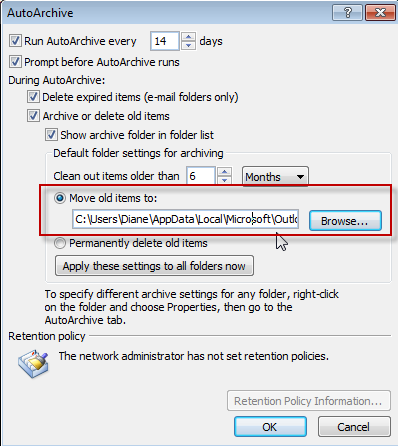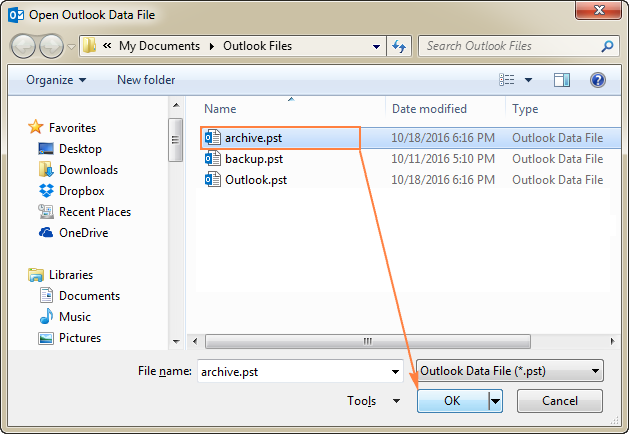


So before going through the Import option, keep a few things in mind.
#How to archive folders in outlook 2013 how to
The Import process sometimes gets frozen and at that instant, it is hard to find, out where it gets stuck and how to get out of it. However, the import process gives you less authentication in selecting a different location on a per-folder or item basis. File > Option > Advanced > Auto Archive Settingīy using the Import Option you will directly import your original archive file into the “Master Archive File”.Tools > Options > Tab Other > Auto Archive.If you want “Master Archive” to be a default archive, then change the location by following given below steps: File > Account Setting > Account Setting > Tab Data Files.Once completed with copying database, disconnect the original archives –.To conveniently move calendar items, out face to list view via View tab or menu.Use the right mouse button in spite of the left when dragging & dropping data to make assured your copy. Copy content from the original archive to “Master Archive”.If you get the urge for a category of storage file, do not select 97-2002 editions, as the archive will get limited to 2 GB.Ĭonnect one of the old archive files to Outlook if it hasn’t been associated yet by following the given below steps:.I endorse a folder called Outlook in the Document folder, make sure you do not select a network location as that is not supported.Select a location and archive file name and display name for it in Microsoft Outlook when urging File > Account setting > Account settings > Tab Data files.Steps for Outlook 2007 and other previous versions Create a New PST as a “Master Archive File” In this manner you’d still have originals in concern merge goes wrong. As you are going to generate a huge archive file, I’d suggest you start with a new PST file which will turn into your “Master Archive” and then copy the content of all PST archives into a single one instead of adjoining any existing archive. The first is following the given described instructions and the second one is completing the task using a third-party tool. There are two varied types of methods to accomplish this task. Step 2: Click the View tab at the top of the window.Published: T17:43:45+05:30| How to | 4 Minutes Reading If you find that you prefer to have the Folder Pane visible after following these steps, simply return to the menu in the final step and return the Folder pane to the Normal view. The steps in this article assume that you wish to hide the pane at the left side of the window that contains a list of all of your folders. Hiding the Folder Pane from View in Outlook 2013 If you find that you rarely navigate through your messages via the Folder Pane at the left side of the window, then you can follow our guide below to learn how to hide it. Almost every inch of the program window is filled with different tools and files that allow you to best manage your email, contacts, and calendars.īut depending upon how you personally use the program, or your own preferences when it comes to which elements of Outlook are displayed, you might wish to hide one of the larger sections of the window. Some of these sections of the window are known as Panes – specifically the Folder Pane and the Preview Pane. Microsoft Outlook 2013 makes great use of the space that it takes up on your screen.


 0 kommentar(er)
0 kommentar(er)
